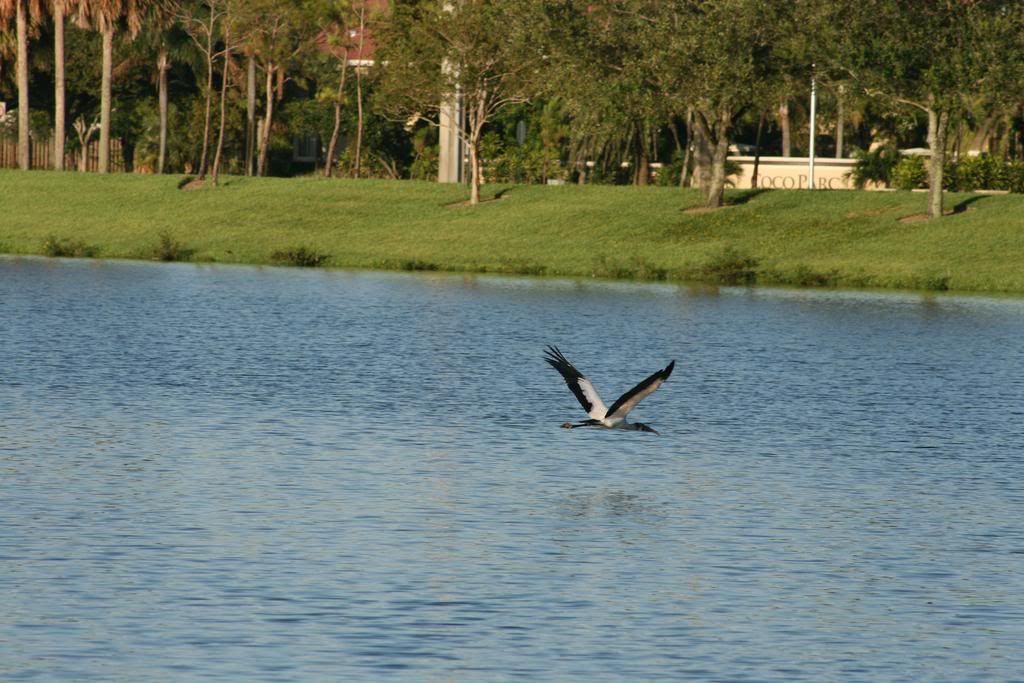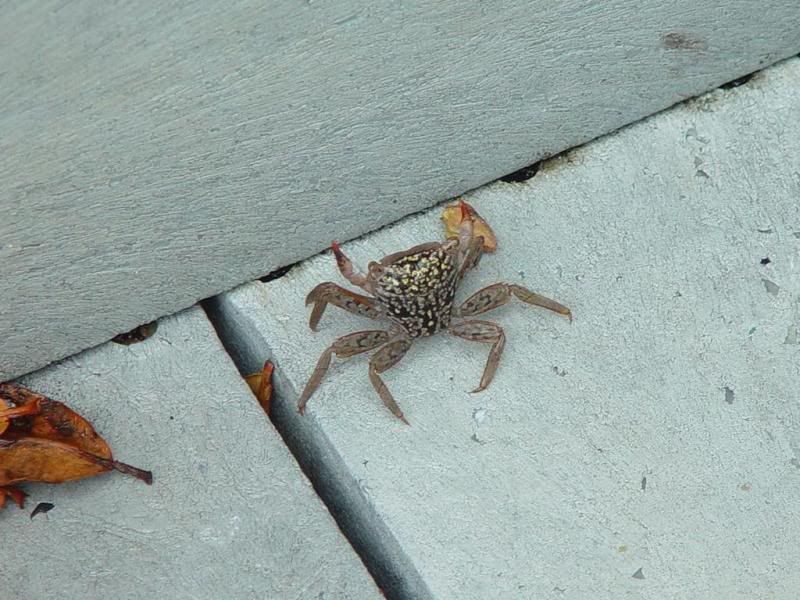I’m currently working on an article for This Dish is Veg on why vegans should care about wildlife. When I first realized that not all vegans are wildlife advocates, I was confused. How is it that some people distinguish between farm animals, companion animals, and wild animals? How do they not consider wildlife with the same interest and compassion?
But over the last few years of traveling - visiting parks and natural areas in Georgia, South Carolina, Maryland, Pennsylvania, Wisconsin, Illinois, Oregon, and Washington - I’ve come to realize that being born and raised in South Florida gives me a different perspective on and relationship to wildlife than other people have.
A Little Context
The Miami-Fort Lauderdale metropolitan area is the eighth largest mass of human life in the country, according to the most recent U.S. Census Data. But it sits wedged between the ocean and the Everglades, in one of the most biologically diverse environments in the country. The only major metropolitan area in the U.S. with a tropical climate, it teems with life in every available inch of green space, and that life spills over onto the concrete and asphalt.
But over the last few years of traveling - visiting parks and natural areas in Georgia, South Carolina, Maryland, Pennsylvania, Wisconsin, Illinois, Oregon, and Washington - I’ve come to realize that being born and raised in South Florida gives me a different perspective on and relationship to wildlife than other people have.
A Little Context
The Miami-Fort Lauderdale metropolitan area is the eighth largest mass of human life in the country, according to the most recent U.S. Census Data. But it sits wedged between the ocean and the Everglades, in one of the most biologically diverse environments in the country. The only major metropolitan area in the U.S. with a tropical climate, it teems with life in every available inch of green space, and that life spills over onto the concrete and asphalt.
 |
| An endangered woodstork hanging out at neighboring suburb's pond. |
Fort Lauderdale, my hometown, is nicknamed “The Venice of America” because of its intricate system of canals. Though I live a city block in either direction from a canal, I frequently see flocks of ibis picking bugs out of neighbors’ neatly-manicured lawns when I leave for work in the morning, and double-breasted cormorants sitting on streetlights when I return home at night. In my neighborhood, where the human population density is 8,865 people per square mile, it’s not surprising to see Quaker parrots, egrets, iguanas, or snakes visiting your backyard. Though my house is five miles inland, I often see seagulls circling around the local restaurants.
 |
| Green iguana on the telephone wire in my backyard. |
And nevermind the birds and reptiles, the place is crawling with creepy-crawlies. On one memorable backyard photo safari, I captured four types of butterfly, three varieties of ladybug, two types of bees, plus ants, beetles, bottle flies, and most memorably, an assassin bug, all in one morning. Lizards, frogs, and spiders are also commonplace outdoors, and not at all surprising indoors.
 |
| Gator in the storm drain of my office park last week. |
A short journey to any neighborhood park with a body of water will show you dozens of kinds of wading and songbirds, as well as turtles, ducks, and the occasional gator. An hour’s drive inland will put you in the big swamp, but small pockets of wetlands dot the urban landscape. In fifteen minutes, I can choose between kayaking a mangrove swamp populated with osprey, herons, and tree-climbing crabs, or a Cypress swamp, where bobcats, armadillo, and raccoons share space with river otters and songbirds. Or, of course, the Atlantic Ocean, with pelicans, sandpipers, and gulls snapping fish out of the shallows, coral, sponge, and man-o-war washing up on the shore, and the occasional shark or barracuda swimming near the pier.
In comparison, most other places I visit seem tame, sometimes almost lifeless. It is strange to me to walk through a neighborhood or park and not to hear the constant chirp and scrape of insects, the crackle of branches as lizards flee from my footsteps into the brush, the ever-present song of birds. It’s odd to stand near water and not see long-legged birds wading and sharp-eyed birds circling overhead.
A friend pointed out that urban wildlife exists in most cities, and that’s true. I’m just explaining the scope of our interaction here. There’s a reason that the South Florida Wildlife Center is the busiest wildlife hospital in the country. Wild animals are omnipresent. Everywhere, every day of the year, you can look up, down, or sideways and find a living creature. And humans are stomping around in their space.
So conservation is drilled into Florida natives. Our beaches have reduced lighting zones to facilitate sea turtle nesting. Our waterways are dotted with ‘no wake’ zones to protect wintering manatees. Roads that traverse the swamp have different daytime and nighttime speed limits for the safety of the nocturnal Florida panther. According to the Florida Natural Areas Inventory, we have over nine million acres of conservation lands, not including submerged areas such as lakes, bays, and aquatic preserves. Between national parks, national forests, national wildlife refuges, state parks, city parks, water management district parks, privately or nonprofit-owned sanctuaries, preserves, and rescues, etc., there are managed wildlife areas everywhere you turn.
What About Farm Animals?
Even if you’ve never been to Florida, this description is probably not altogether surprising. The image people have of Florida generally revolves around Flipper and alligators, so the idea that it’s a tropical haven for wildlife is consistent. But did you know that animal agriculture is one of the largest industries in Florida? The very name we natives are called - Crackers - is mythologized as the sound of a cattle driver’s whip. Until very recently, there were still horse paths about three miles from my very urban home. About three miles in the other direction was a large dairy.
Of course, in recent years, it has been less and less common to see herds of cows in pastures as you drive South Florida’s roads. As any vegan knows, cows no longer reside in pastures - they reside in factories. Horses are still fairly common on the streets in a few areas of my county, and chickens are quite common on the streets in some neighborhoods. Lately, there are two chickens hanging around on the grass outside my gym; I often see them through the window when I’m swimming laps.
So from an early age, companion animals, farm animals, and wild animals were present in my life, and they continue to be so. I’ve never made any distinction in my love of animals, and I certainly make no distinction in my interest in preserving their lives and reducing their suffering.
A Wildlife Awakening
In comparison, most other places I visit seem tame, sometimes almost lifeless. It is strange to me to walk through a neighborhood or park and not to hear the constant chirp and scrape of insects, the crackle of branches as lizards flee from my footsteps into the brush, the ever-present song of birds. It’s odd to stand near water and not see long-legged birds wading and sharp-eyed birds circling overhead.
 |
| A mangrove tree crab scuttles along the boardwalk. |
So conservation is drilled into Florida natives. Our beaches have reduced lighting zones to facilitate sea turtle nesting. Our waterways are dotted with ‘no wake’ zones to protect wintering manatees. Roads that traverse the swamp have different daytime and nighttime speed limits for the safety of the nocturnal Florida panther. According to the Florida Natural Areas Inventory, we have over nine million acres of conservation lands, not including submerged areas such as lakes, bays, and aquatic preserves. Between national parks, national forests, national wildlife refuges, state parks, city parks, water management district parks, privately or nonprofit-owned sanctuaries, preserves, and rescues, etc., there are managed wildlife areas everywhere you turn.
 |
| Horses on a county trail that runs right behind a suburban housing complex. |
Of course, in recent years, it has been less and less common to see herds of cows in pastures as you drive South Florida’s roads. As any vegan knows, cows no longer reside in pastures - they reside in factories. Horses are still fairly common on the streets in a few areas of my county, and chickens are quite common on the streets in some neighborhoods. Lately, there are two chickens hanging around on the grass outside my gym; I often see them through the window when I’m swimming laps.
So from an early age, companion animals, farm animals, and wild animals were present in my life, and they continue to be so. I’ve never made any distinction in my love of animals, and I certainly make no distinction in my interest in preserving their lives and reducing their suffering.
A Wildlife Awakening
 |
| Insects clustered on a branch in the hours after Hurricane Ernesto swept through town. |
In fact, a love of wild animals played a significant part in my return to a compassionate lifestyle. I became a vegetarian the first time when I made the connection between the chicken in the petting zoo and the chicken on my plate. More recently, when I returned to a vegetarian diet before becoming vegan, it was the realization that Japan’s tradition of eating wild and beautiful cetaceans was no different than my eating domesticated animals. (This is why my husband blames Whale Wars.)
So, to me, it’s very difficult to understand why anyone wouldn’t see wildlife conservation as a vegan issue. When I first returned to a compassionate diet, I wrote that I was doing so because I didn’t want any living creature to have to die on my behalf. Isn’t that the essence of veganism? To seek to end the needless death of animals? And aren’t the deaths of wild animals as a result of development or pollution just as needless?
No comments:
Post a Comment